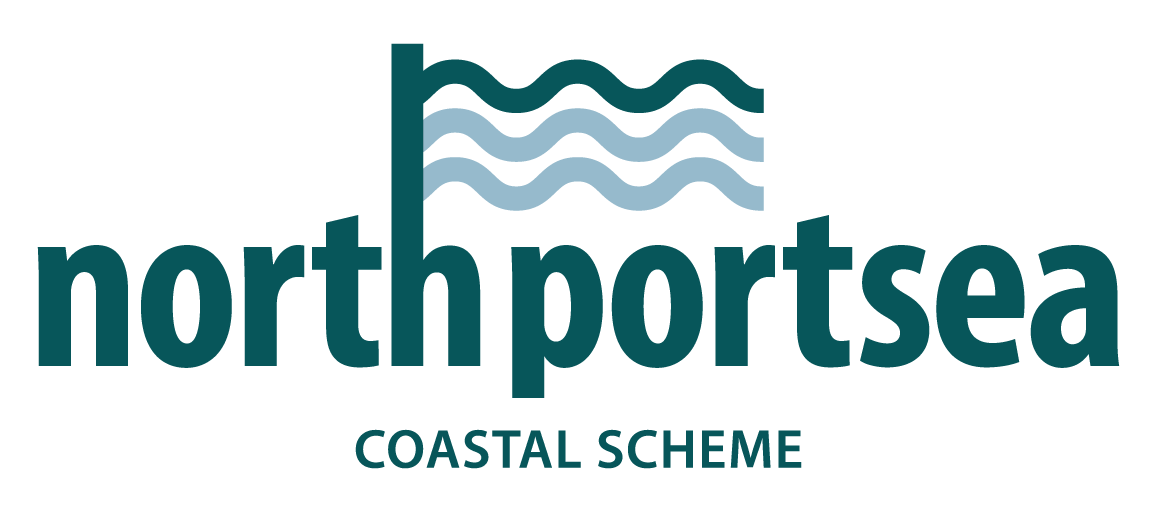North Portsea Coastal Scheme Phase 4b Update March 2023
Guess who's back…?
After pausing all work close to the sea during the winter to protect overwintering birds, we are excited to return to commence work at Eastern Road from April 2023.
As construction work will be moving further south along Eastern Road, linking in with the finished area of previous phase 2 at Milton Common, the coastal path will be closed from mid-March until autumn 2023. A diversion is in place (see map below)
What's next in 2023?
This year will see the construction of the remaining 800 m of wall (approx.), tying in with the finished sea defence at Milton Common.
For this, we will be carrying out some piling work first, where steel sheet piles are driven deep into the ground to help stabilise the wall, followed by concrete pours to complete the sea wall in sections. All of the sea wall will be textured facing the sea, to provide shelter and shade while retaining moisture, creating a suitable habitat for marine plants and animals to flourish. The texture is created using an ecoformliner mould. This has been specially designed by our team, in conjunction with the Universities of Glasgow and Bournemouth. And, perhaps most impressive of all, it will be the first ever large-scale application of such a product in the UK.
Throughout this year’s construction, you will also see the development of social spots, seating, way finders and the installation of the many environmental enhancements that are planned: tidal pools within the seawall base and bee posts along the path, as well as a new offshore high tide roost site (bird island).
An island to one’s self
We know that Langstone Harbour ranks within the top 10 most important places for birds in the UK and every year as many as 40,000 birds may spend the winter in the Harbour, either roosting or feeding on the mudflats.
Species regularly encountered include shelduck, dunlin, plover, black-tailed godwit, redshank and up to 6% of the world population of dark-bellied brent geese.
They come here because of the food and shelter the harbour provides. Many birds feed on shellfish, worms and other invertebrates that thrive in the mud, while others feed on harbour plants and nearby grasslands. When the tide covers their feeding grounds, the birds need quiet undisturbed places to roost.*
As part of the defence work at Eastern Road we are building a new bird island to provide a high tide roost site for birds within the harbour.
The foundation will be made using recycled material from the old sea wall at Eastern Road and covered with 60-300kg granite armour stone rock (similar to the rock you may have seen around Southsea Castle at our sister project Southsea Coastal Scheme) and shingle to create a more natural, bird-friendly, surface.
The position of the new bird island, a little further out, will ensure the birds are able to roost undisturbed away from traffic noise or dogs, but at the same time be visible for all to catch a glimpse of the wild birds when passing by.
*information from Langstone Harbour Board Wildlife | Langstone Harbour
| SAFETY |
CONTACT US |
|---|---|
|
Please keep your safety in mind when walking close to construction works. We apologise for any inconvenience caused and thank you in advance for your cooperation throughout the works. |
If you have any questions about this project or issue to report, please contact the Coastal Partners Team. If you would like to speak to someone directly please contact Angela via email or phone: Angela Spinks: Public Liaison Officer at Mackley
|





